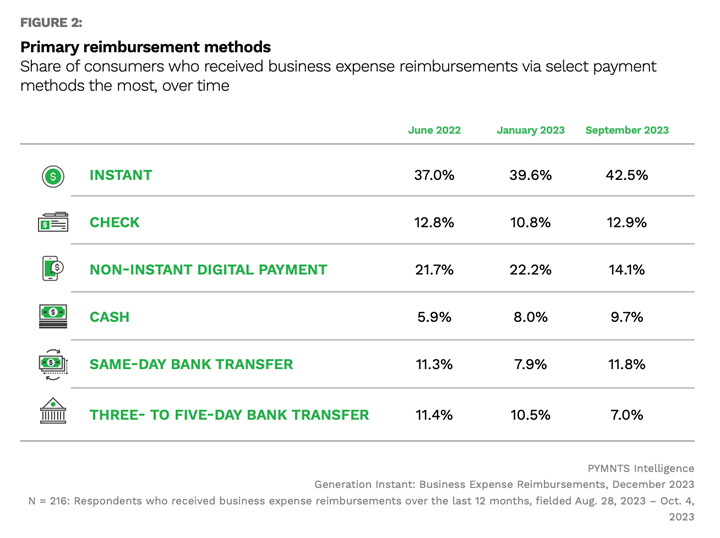
Business travel has been coming back since the pandemic was over. More and more executives are visiting clients, prospect clients or colleagues worldwide. But if there is one thing that executives like more than traveling, it is getting reimbursed for the expenses incurred on these trips.
Instant payments continue gaining ground on many fronts, such as consumer bill payments or B2B transfers, but also in business reimbursements. Employees incur these expenses as part of their activity that their companies reimburse after payment. Examples include the travel expenses earlier mentioned but also restaurant meals or hotels.
“Generation Instant: Business Expense Reimbursements,” a PYMNTS Intelligence research study in collaboration with Ingo Money, examines customers’ satisfaction with business expense disbursements received from government and nongovernment entities via selected payment methods.
According to a PYMNTS Intelligence data, in June 2022, non-instant payments were the most used method for employee disbursements. This included checks, three-to-five-day bank transfers and non-instant digital payments. At that time, these three payment methods combined accounted for nearly 46% of all employees’ business expense disbursements, while the share has been reduced to 34% as of September 2023. During that time, instant payments expanded rapidly thanks to its ease, convenience, and security.
Almost all the ground lost by these non-instant payments has been gained by instant payments, which have gone from 37% of employees’ disbursements to more than 45%, according to PYMNTS Intelligence data. Reasons that consumers cite for choosing instant are not only the speed and convenience of these systems but also a guarantee of funds and security. Thus, 78% of consumers who have used instant payments say they are very satisfied when receiving their expense reimbursements via instant payments. In contrast, 70% of receivers who are highly satisfied across all payment methods agree. This means that consumers are 12% more satisfied with instant payments than the average consumer receiving these payouts.

Beyond the facilities instant payments provide to customers, there are other reasons to believe that the transfer to instant payments for business expense reimbursement may continue over time. Half of the respondents who chose another payment method cited concerns with sharing their payment credentials as the most important reason to do so, while more than one-third cited incentives or rewards as a good reason to continue working with traditional payment methods. It follows that if payment processors introduce rewards programs or improve their customers’ authentication systems, we might expect more businesses to adopt instant payments in the near future.